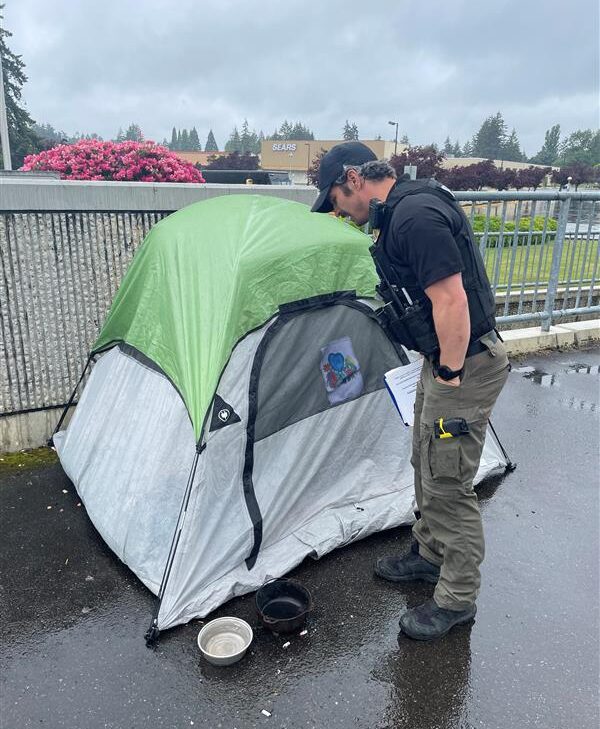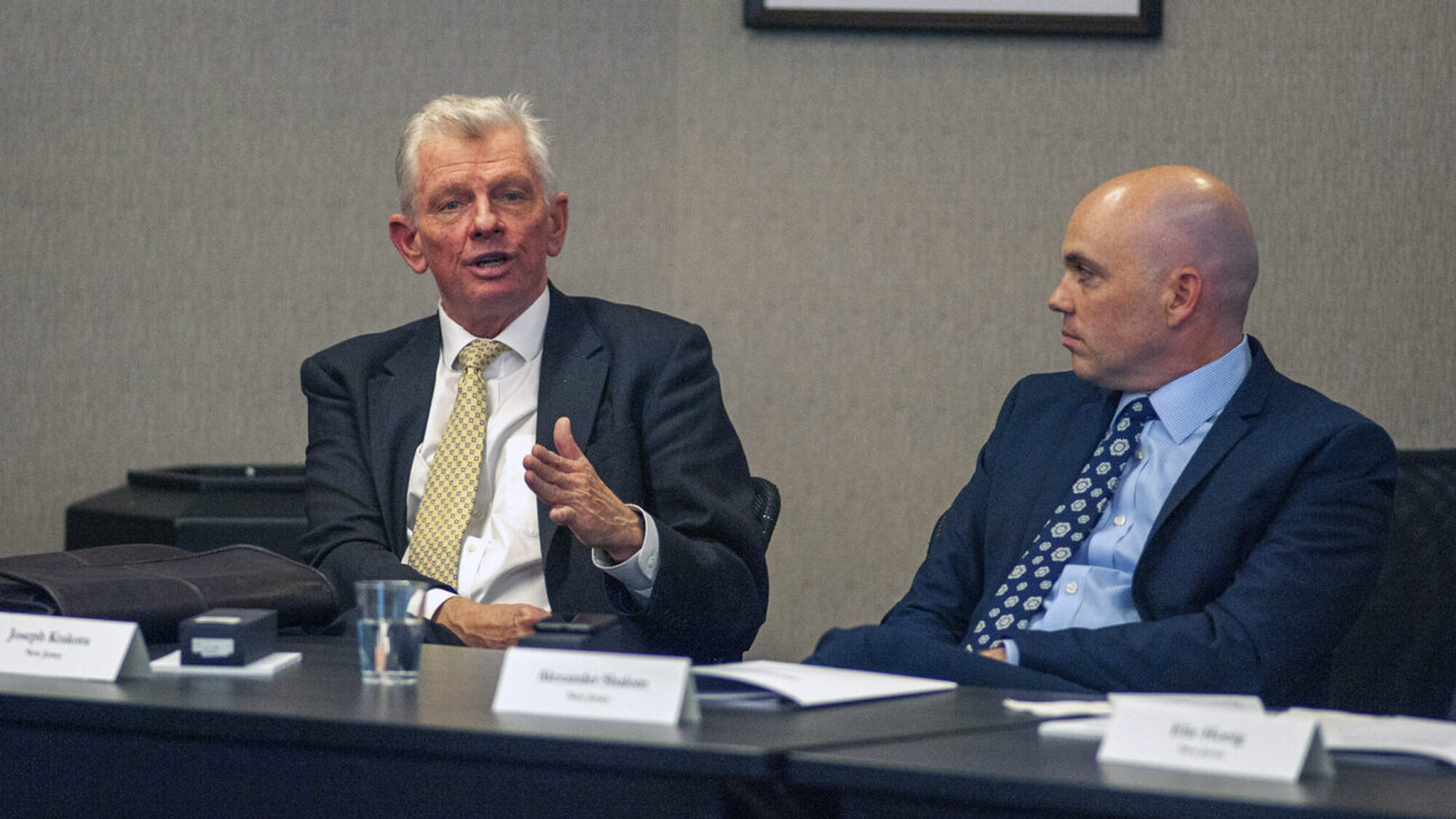Matt Alsdorf, associate director of the Center for Effective Public Policy, conducted the interviews in February 2024. The interviews are edited and condensed.
Matt Alsdorf: How is implementation of the Pretrial Fairness Act going for your county overall?
Deputy Chief Armando Sanders, Montgomery Policy Department: The apprehension and the fear of the unknown are what a lot of people assumed would be the worst: that no one would be charged, no one would be detained in jail, and that it would just be a very confusing mess. That has not happened.
Sheriff Kyle Bacon, Franklin County: It’s going OK. Before implementation, our average daily jail population here ran anywhere from 90 to 110. We’ve been sitting at about the 60 mark [a] or so since September 2023. Most of the people we wanted detained or believed were eligible for detention under the Pretrial Fairness Act have been detained. I was told that there were one or two people that the state’s attorney had argued to detain who were not detained, but a vast majority have met that standard with our court. So, we’re happy about that.
Chief Jamal Simington, Bloomington Police Department: From my perspective, it hasn’t been as bad as anticipated. A lot of officers had anxiety. Certainly, it’s a change for veterans, especially because they’ve been practicing a certain way to deliver services and pursue justice, some for well over 20 years. So, the practice of issuing citations and learning to complete arrest reports for the charges that are eligible for detention was tremendously different for them. Since I’ve been in my position for just about two and a half years, I’ve hired over 30 police officers. For them, the adjustment was easier. The anxiety was probably less, but each of their supervisors is a veteran, so it’s the supervisors trying to learn a different way.
Our arrest numbers are actually down. The reports of certain crimes are down in a lot of respects.
Alsdorf: What are some positive impacts of the policy change?
Sheriff Bacon: People complain about many being released from jail, but I remind them, don’t forget about the flip side of that, and that those who are detained have no possibility of being released because they can pay a bond.
Deputy Chief Sanders: It has streamlined a lot of the offenses where we issue a citation on the scene and tell them their court date and what they have to do. If it’s someone who’s trespassing, we say, “Here’s your summons. Here’s your court information. And now you have to leave,” and they usually comply. Before, we were taking the extra step of bringing them in, fingerprinting them, and processing them. That isn’t happening as much now.
Chief Simington: You can respond to a situation and resolve a situation with fewer personnel hours for those miscellaneous offenses, like retail thefts and criminal trespass. You can cite and release and then move on. This saves officers time because you’re not booking people into jail.

Alsdorf: What are your thoughts on the Pretrial Fairness Act’s impact on effectively detaining people?
Ability to Detain
The Pretrial Fairness Act (110-6.1) outlines the charges for which a person can be denied pretrial release and the process for prosecutors to seek detention.
SHERIFF BACON: I’ve been happy with the detention of violent defendants. Our state’s attorney here has done a good job of making those detention arguments. And our judges…I give them credit. The judges live here. They know who these people are. They’re former attorneys. There are defense attorneys. We have two who are former state’s attorneys. I’ve been very happy with that aspect of things: people are being detained, and that’s a good thing.
CHIEF SIMINGTON: I’m just going to give kudos to our current state’s attorney and even the one before her, who take violent crimes seriously. We have found that those who should be detained for acts of domestic violence, even child sex crimes…having them detained has been appropriate, and that’s been an upside to this act.
ALSDORF: How have your deputies adapted to issuing citations, rather than making custodial arrests, in certain cases?
Release by Law Enforcement
The Pretrial Fairness Act (725 ILCS 5/109-1) gives police the authority to release anyone arrested for a non-detention-eligible offense and to use citations in lieu of arrest for Class B and C misdemeanors and petty or business offenses unless there is a risk to public safety, the person has a medical or mental health need, or the person does not stop the criminal behavior.
Chief Simington: The changes were significant from a procedural perspective. As an officer trying to work through the matrix of who you can arrest, who you can’t arrest, who you can cite, and how you can detain, there’s complexity to it. Officers want always to make sure that they get it right and they’re following the law. You have to slow down to absorb the decision-making process until you get to a point where it becomes second nature. We were very engaged from a training perspective, trying to stay ahead of it.
Deputy Chief Sanders: “No news is good news” is probably the best way to put it. I haven’t heard a lot of complaints. I’ve asked the officers, and the complaints I have heard are more generalities, like “How can you define when someone’s going to stay in jail versus not?” Outside of that, I haven’t heard too many negatives.
Fingerprinting has been a big issue because the Pretrial Fairness Act favors a citation and release without fingerprinting. However, if we don’t get a fingerprint, we can’t have a complete criminal history. If I am charged with a retail theft in Montgomery and I fail to get fingerprinted because I’m released on scene, I could go to any other city and be charged with the same crime and be released again. You wouldn’t know how many times I’ve committed that crime if fingerprints aren’t captured, submitted, and completed.
We need to satisfy the clerk’s request and then the Illinois State Police directive for fingerprints. So, in Kane County, in our complaint form, it says you will come to the station or the courthouse to get fingerprinted at a specific date and time so we can record that data. But soon we’re getting a mobile fingerprint machine to capture fingerprints in the field.
Sheriff Bacon: In our sheriff’s office, deputies spend a lot of time in fairly rural areas of our county. I don’t think any of our guys has done a cite and release in the field. We don’t see a lot of criminal trespass-type offenses. If we do, we resolve them in the field through conversation.
If it’s a Class-A misdemeanor or above, we have been bringing people to jail. I told our guys you can cite and release on a Class-A misdemeanor, but I don’t like that because, if you don’t book someone, it is absent from their criminal history reports.
Alsdorf: Following implementation of the Pretrial Fairness Act, what has been the most challenging issue?
Chief Simington: A lot of our businesses and community members are anxious. A lot of the crimes we deal with on a daily basis are misdemeanor criminal trespass and retail theft. Some are nuisance crimes, harassment, and things of that nature. Community members are not happy with the fact the police can’t make a custodial arrest. They want the police to solve their problem. A lot of times, the person believed to have committed the act may be back [b] to that house literally before the police officer can complete a report. That’s probably been the most concerning for the officer from a problem-solving opportunity. It’s been frustrating at times.
Before the Pretrial Fairness Act, we solved the problem for that night by booking a person into jail, and that night generally led to the next day because the person wasn’t able to provide a cash bond.
When a person is in jail, it puts that caller, that complainant, at ease. Now, there’s a lot of uncertainty for the person who’s being victimized. And, as the police, that’s who we hear from: the people who are being victimized over and over and over again. It just truly does handcuff law enforcement from a service delivery protection perspective.
Substance Use Disorder
All communities are challenged to address the intersection of substance use disorder and the criminal legal system. However, rural counties struggle with higher rates of methamphetamine and opioid use disorder than their metropolitan counterparts and may have fewer services and treatment facilities to address the problem, placing an extra strain on jails. Compounding the challenge, the risk of death from overdose is shown to be higher for people released after spending a period in jail.
Sheriff Bacon: The issue we have is people who are high on methamphetamine, fentanyl, or whatever it is, and we book them in, and we shoot them out the front door still high on those drugs. There’s no clean time. There’s no sitting in jail for two or three days and then maybe getting a clearer head and saying, “What am I doing?” That’s a big concern.
How can releasing someone who is deep into methamphetamine addiction be a positive thing for our community or for the person? In my opinion, that doesn’t serve that person well, and it doesn’t serve the community well. We’re not social service workers here but, at the same time, we make many arrests that I would call humanitarian arrests.
I understand why cash bond was eliminated. That’s obvious to me. But I am concerned about just bringing people in who are an absolute disaster, booking them into jail, giving them a court date, and shooting them out the front door. That is a big struggle for us here.
Deputy Chief Sanders: One of the most challenging issues was dealing with the interpretation of the law and the language by different people. You have legislators who passed legislation with some intent in mind. You have officers interpreting the law. We have our chiefs and executive command level personnel who are saying, “This is the interpretation of the law and our direction as an agency.” Then you have the state’s attorneys and the judiciary who advise how they interpret the law. It’s different from agency to agency and county to county based on how they interpreted the law. So, it wasn’t clear cut and there is a lot of gray area.
There may be a perception where law enforcement personnel feel they see a person who is repeatedly being arrested and released more often than before. For example, some criminal trespass offenders may be seen more frequently as they are released on scene with a court date, unless other conditions are met. We can be out with the same person multiple times before we’re able to meet conditions which required them to be detained until they see a Judge.
However, what we don’t see are the multiple other contacts from those who committed the same crime, were released with a court date, and followed their instructions to appear in court where the release conditions were imposed.
When the law passed, one of the first things we did was to get a glossary of definitions. Even the word “detain” meant something different to different people. To law enforcement, detaining somebody meant “I have you physically in handcuffs, and you’re not free to leave,” whereas in the Pretrial Fairness Act, it meant being detained until the court date. So, it was a matter of getting everyone on the same page. Otherwise, we were having different conversations, and I wasn’t really sure what we were talking about because we all had our own definitions and viewpoints. Getting there was difficult.
Alsdorf: How did you prepare for implementation of the Pretrial Fairness Act?
Deputy Chief Sanders: I thought I knew a lot more than I actually knew. I was fortunate enough to be on a Kane County SAFE-T Act implementation task force where multiple stakeholders such as judges, the state’s attorney, public defenders, circuit clerk, the sheriff, and other agencies were all at the same table to discuss the Pretrial Fairness Act. Everyone sees things differently and there was so much value in bringing everyone together. At the end of the day, we were tasked with getting everyone on the same page, asking questions, and coming up with answers.
It’s important to remember that in an imperfect system, you can’t just blame somebody else when something goes wrong, even though that’s easy to do. We all have to realize that we will be frustrated and will come across situations where we will not know what to do. Nobody wants to create case law but it’s best to be prepared. There will be a lot of lessons to be learned from each other and having frank conversations with all stakeholders is the first step.
Sheriff Bacon: One thing we did to get everybody on the same page was set up an office in our jail with a common computer. We put the forms of all the departments throughout the county on that computer. Now, when law enforcement officers come to book someone in the jail, instead of dropping the person off, driving to their office to do the paperwork, and then faxing or emailing it to us, we developed a policy where they complete the paperwork and charges here. If there’s a request for detention, they do that here. They don’t leave our jail until all that’s completed. If it’s a book and release, we have everything we need. If it’s going to be a detention, then we have that paperwork as well.
Chief Simington: Once we knew when the Pretrial Fairness Act was going into effect, we ramped up training again and had in-service training with documents and flow charts and talked through scenarios with each of the police officers and detectives.
After the training, they hadn’t yet been able to apply their learning in practice. But when an officer can apply it that first day, with the second and third repetition, they become sharper. The supervisor can do their quality assurance checks to make sure that the officers are making the appropriate decisions based on how the statute is written and the training provided. The feedback has been good. Officers were happy that we, as a law enforcement agency, and the state’s attorney’s office provided a solid platform for training. There were some small things that needed to be worked out procedurally within the circuit court, but it’s worked out fairly well.
I truly believe in our message here, which is strong supervision is important. Having supervisors out in the field with the officers as they’re working through these situations has helped reassure them that they’re doing it the right way.
Alsdorf: What has your office learned through this initial implementation process, and how have you adjusted your practices?
Chief Simington: Our overtime is significantly higher because reports have to be done by the end of the shift.
Let me throw this scenario at you: We have a homicide where we’ll say 15 police officers are involved at the crime scene, including the responding officer and the detectives. We’re pulling together all of those people to get reports done so we can be prepared in short order for the state’s attorney to file a motion to detain and be prepared for the detention hearing. That has driven our overtime up significantly for those types of offenses. Officers who may have already been on a double shift are now having to work a few more hours to get the reports done, and the reports have to be quality-checked. It’s more strain on a supervisor to make sure those reports are documented. You can’t slow down. You have to get it done and get it done right. I know the state’s attorney has adjusted and provided the best guidance they could. We’ve worked through some things procedurally that will help us, but that’s the most significant challenge when it comes to those types of offenses.
Deputy Chief Sanders: We learned the increased importance of our documentation and reports. What information we used to put in a synopsis was minimal and only what was required. We discussed with the State’s Attorney what information was needed in order to bring a person in front of the judge now. We have to show the reason this person should be in jail, which could include prior history, threats made, along with other relevant information to be presented to the Judge.
We learned more about pretrial services and how they related to the Pretrail Fairness Act and the Constitution. Being arrested doesn’t mean you’re not part of the community anymore. You have a court date; you’re presumed innocent. That doesn’t mean you’re written off because you might have made a mistake because everybody makes mistakes. It means they have to go to court, and they usually do that. But what resources are available? What can we do for them? In Kane County, they send reminders for court dates and do a lot of things you would never really think about. We’re here to help the community. Understanding pretrial services, that was just one thing that I was like, wow, we really didn’t know about that. So, it’s been valuable to get a basic overview of what’s offered in our counties.
Find more information on CEPP’s Illinois Pretrial Fairness Act Resources.








